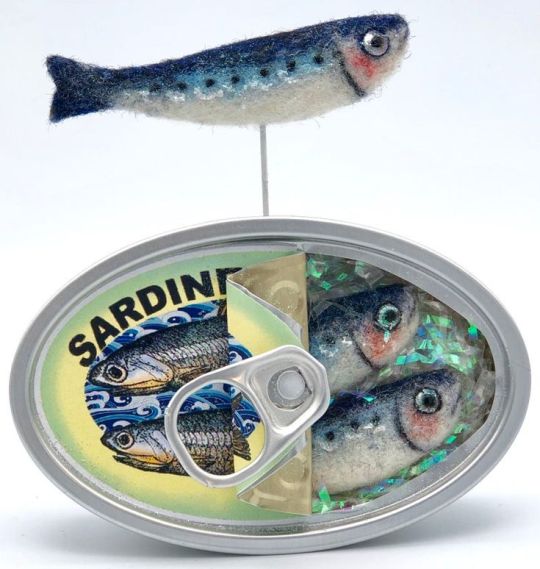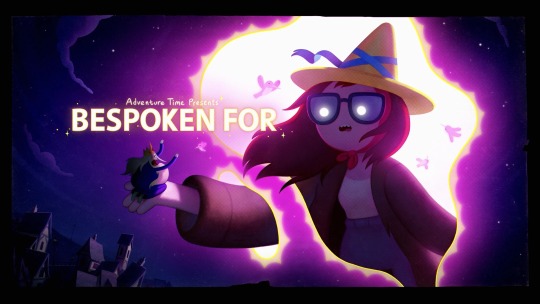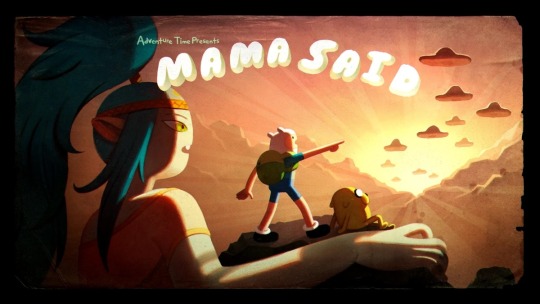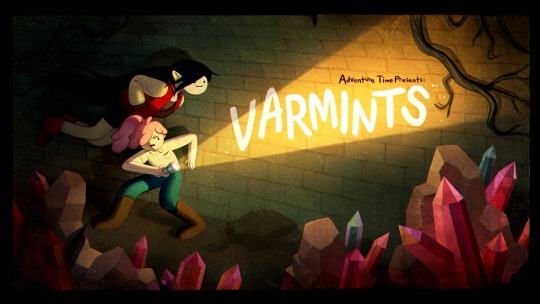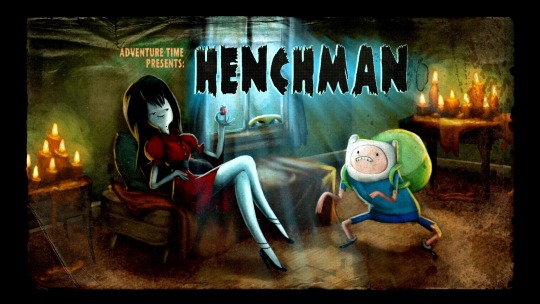Text
🚨 Students at Harvard University launched an encampment in support of Gaza in Harvard Yard moments ago, calling for an end to Harvard's moral and material complicity in the ongoing genocide of the Palestinian people.
Harvard has invested over $200 million of its over $51 billion endowment in companies with ties to zionist settlements in the West Bank, while most of its investments to the zionist entity are kept secret.
The students are demanding financial transparency regarding investments related to the zionist entity, as well as genocide and occupation in Palestine; divestment from these investments and reinvestment in Palestine; and dropping all charges against student activists.
The University has suppressed student voices in support of Palestine time and time again, suspending the Palestine Solidarity Committee just this week on baseless grounds. They have also enabled attacks on pro-Palestinian students from the media and politicians. Today, the students say enough is enough, and that they will no longer tolerate their institution's support for genocide.
This brings the number of ongoing encampments to 19, with more to come.
5K notes
·
View notes
Text
I got a job at a Ukrainian museum.
On the first day someone asks me if I have any Ukrainian heritage. I say I had ancestors from Odesa, but they were Jewish, so they weren’t considered Ukrainian, and they wouldn’t have considered themselves Ukrainian. My job is every day I go through boxes of Ukrainian textiles and I write a physical description, take measurements, take photographs, and upload everything into the database. I look up “Jewish” in the database and there is no result.
Some objects have no context at all, some come with handwritten notes or related documents. I look at thick hand-spun, hand-woven linen heavy with embroidery. Embroidery they say can take a year or more. I think of someone dressed for a wedding in their best clothes they made with their own hands. Some shirts were donated with photographs of the original owners dressed in them, for a dance at the Ukrainian Labour Temple, in 1935. I handle the pieces carefully, looking at how they fit the men in the photos, and how they look almost a hundred years later packed in acid-free tissue. One of the men died a few years later, in the war. He was younger than I am now. The military archive has more photographs of him with his mother, his father, his fiancé. I take care in writing the catalogue entry, breathing in the history, getting tearful.
I imagine people dressed in their best shirts at Easter, going around town in their best shirts burning the houses of Jews, in their best shirts, killing Jews. A shirt with dense embroidery all over the sleeves and chest has a note that says it is from Husiatyn. I look it up and find that it was largely a Jewish town, and Ukrainians lived in the outskirts. There is a fortress synagogue from the Renaissance period, now abandoned.
When my partner Aaron visits I take him to an event at the museum where a man shows his collection of over fifty musical instruments from Ukraine, and he plays each one. Children are seated on the floor at the front. We’re standing in a corner, the room full of Ukrainians, very aware that we look like Jews, but not sure if anyone recognizes what that looks like anymore. Aaron gets emotional over a song played on the bandura.
A note with a dress says it came from the Buchach region. I find a story of Jewish life in Buchach in the early twentieth century, preparing to flee as the Nazis take over. I cry over this.
I’m cataloguing a set of commemorative ribbons that were placed on the grave of a Ukrainian Nationalist leader, Yevhen Konovalets, after he was assassinated. The ribbons were collected and stored by another Nationalist, Andriy Melnyk, who took over leadership after Konovalets’ death. The ribbons are painted or embroidered with messages honouring the dead politician. I start to recognize the word for “leader”, the Cyrillic letters which make up the name of the colonel, the letters “OYH” which stand for Organization of Ukrainian Nationalists (OUN in English). The OUN played a big part in the Lviv pogroms in 1941, I learn. The Wikipedia article has a black and white image of a woman in her underwear, running in terror from a man and a young boy carrying a stick of wood. The woman’s face is dark, her nose may be bleeding. Her underwear is torn, her breast exposed. I’m measuring, photographing, recording the stains and loose threads in the banners that honour men who would have done this to me.
Every day I can’t stop looking at my phone, looking up the news from Gaza, tapping through Instagram stories that show what the news won’t. Half my family won’t talk to the other half, after I share an article by a scholar of Holocaust and genocide studies, who says Israel is committing a genocide. My dad makes a comment that compares Gaza to the Warsaw Ghetto. This gets him in trouble. My aunt says I must have learned this antisemitism at university, but there is no excuse for my dad.
This morning I see images from Israeli attacks in the West Bank, where they are not at war. There are naked bodies on the dusty ground. I’m not sure if they are alive. This is what I think of when I see the image from the Lviv pogrom. If what it means for Jews to be safe from oppression is to become the oppressor, I don’t want safety. I don’t want to speak about Jews as if we are one People, because I have so little in common with those in green uniforms and tanks. I am called a self-hating Jew but I think I am a self-reflecting Jew.
I don’t know how to articulate how it feels to be handling objects which remind me of Jewish traumas I inherited only from history classes and books. Textiles hold evidence of the bodies that made them and used them. I measure the waist of a skirt and notice that it is the same as my waist size. I think of clothing and textiles that were looted from Jewish homes during pogroms. I think of clothing and textiles that were looted from Palestinian homes during the ongoing Nakba. Clothes hold the shape of the body that once dressed in them. Sometimes there are tears, mends, stains. I am rummaging through personal belongings in my nitrile gloves.
I am hands-on learning about the violence caused by Ukrainian Nationalism while more than nine thousand Palestinians have been killed by the State of Israel in three weeks, not to mention all those who have been killed in the last seventy-five years of occupation, in the name of the Jewish Nation, the Jewish People — me? If we (and I am hesitant to say “we”) learned anything from the centuries of being killed, it was how to kill. This should not have been the lesson learned. Zionism wants us to feel constantly like the victims, like we need to defend ourself, like violence is necessary, inevitable. I need community that believes in freedom for all, not just our own People. I need the half of my family who believes in this necessary “self-defence” to remember our history, and not just the one that ends happily ever after with the creation of the State of Israel. Genocide should not be this controversial. We should not be okay with this.
Tomorrow I will go to work and keep cataloguing banners that honour the leader of an organization which led pogroms. I will keep checking the news, crying into my phone, coordinating with organizers about our next actions, grappling with how we can be a tiny part in ending this genocide that the world won’t acknowledge, out of guilt over the ones it ignored long ago.
7K notes
·
View notes
Text

Deaths in Sudan could reach 10,000 per day in the coming months if the mass displacement of people caused by a year-long civil war sparks famine.
The dire projection, which represents a worst case scenario and would put the conflict on a par with the worst days of the Battle of the Somme, was being urgently debated by Western envoys and diplomats this week.
Other actors, including the World Food Programme, say the estimates are exaggerated but accept that a major humanitarian catastrophe is unfolding.
It is already the world’s biggest single displacement crisis, with up to 11 million people, including four million children, forced from their homes and farms.
Millions of refugees have fled into neighbouring Chad and South Sudan. And, across the region, some 25 million people are now unable to feed themselves properly, with at least five million on the cusp of famine, according to the United Nations.
2K notes
·
View notes
Text
So I’ve been teaching 6th grade since January, and one thing about my female students which made me upset to realize is how many of them are obsessed with skincare. I've heard the girls in my class discussing the EYE CREAM they use. Like tf you mean eye cream? You're ELEVEN!!! I'm a decade older than you and have never even touched eye cream!! The most skincare a middle schooler needs is cleanser and moisturizer, maybe some acne cream. Who tf is selling you all this other stuff? Who tf told you you needed all this?
It hurts me to see. Their brains are too young for these types of insecurities 😭 no 11 year old girl should be obsessed with wrinkles, I wanna beat tf out of whatever tiktoker made them believe they needed skin that perfect
40K notes
·
View notes
Text

from "gender outlaws: the next generation"
image transcript:
Let me break it down this way: some lesbians and gays feel that their issues are more important than transgender issues, because transgender people are freaks. Some transgender people—often, but not only, transsexuals—view transsexual issues as more important than the issues of, say, cross-dressers. Some among the more genderqueer portions of our community look down upon those who opt to live in a more “normatively gendered” space. There are even groups that cross-dressers feel superior to: sissies, drag kings and queens, “little girls,” and so on. Yes, I’m sure that we could follow even each of these groups and find that, eventually, everyone has someone they view as a freak.
This is a human phenomenon, and one which occurs especially, it seems, among marginalized groups. Trekkers versus trekkies versus people in Klingon costumes, or furries versus fursuiters versus, oh, plushies. I’m sure if I looked at model railroaders, I’d probably find that HO gauge fans look down at N scale, or something like that. The taxonomies are endless, often circular, and are usually graded to a fineness that would be invisible to any outsider. We just want to identify the “real” freaks, so we can feel closer to normal. In reality, not a single one of us is so magically normative as to claim the right to separate out the freaks from everyone else. We are all freaks to someone. Maybe even—if we’re honest—to ourselves.
6K notes
·
View notes
Text




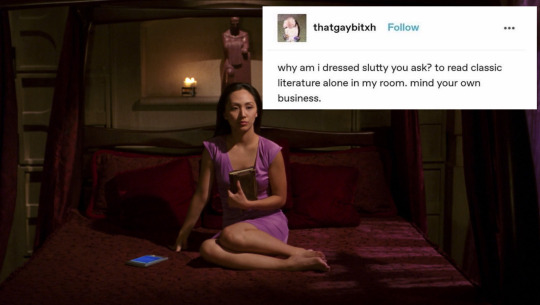
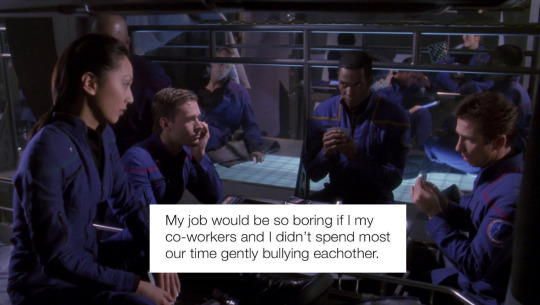
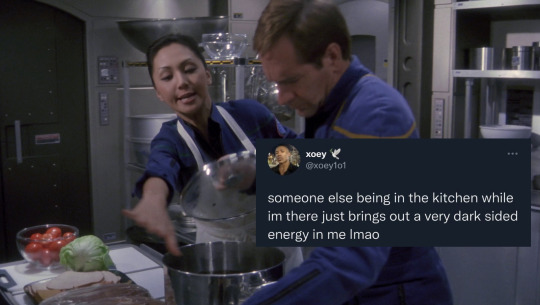

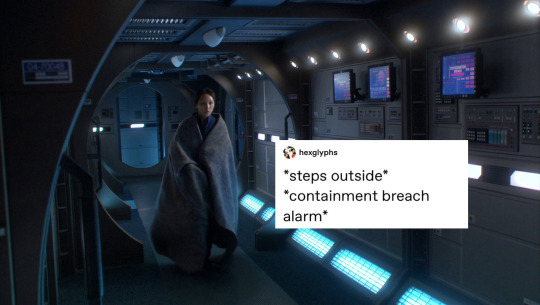
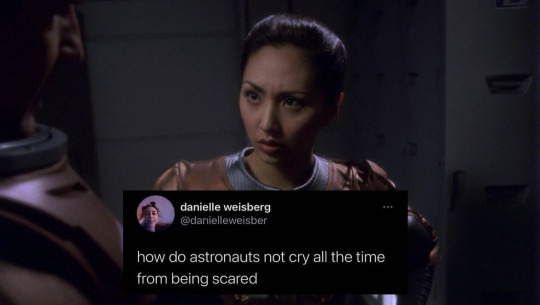
enterprise text posts: featuring starfleet’s most reluctant astronaut, hoshi <3
520 notes
·
View notes
Text
The thing that abled people who advocate for the disabled community don’t get is that there are times when disabilities/accommodations clash. Horribly.
Like I spent years having to come up with a solution to get therapy dogs into a series of residence halls. Why years? Because we had to decide who got to stay and who got to leave: the people who needed therapy dogs or the people with severe allergies to animals. Who got the alternative housing?
Things like fidget toys might seem great for some disabled people but having them in the room could be distracting/overstimulating for others. The same goes with stimming. It can’t be helped but neither can the anxiety that another person in the room feels as they watch/hear it. Additionally, something like a weighted blanket might immediately calm one kid down and send the other one into a panic attack due to the claustrophobia it causes. (*Points to myself*)
Every Metro bus in New York City has a series of seats at the front that can be lifted up to accommodate people in wheelchairs but if I’m in one of those spots then someone with a cane/walker has to journey even further to sit down.
The flashing lights of a fire alarm are there to help deaf/hearing impaired but if they’re not properly timed, they can also cause a person to have a seizure.
The worst part about all of these is that there is rarely a concrete solution that makes everyone happy/safe. And I’m not here to offer any because I don’t know them. I’m just here to remind you all that as you’re taking your education/health classes, as you’re reading your textbooks, as you’re preparing to go be an advocate, just remember that there is rarely ever such a thing as a one-size-fits-all solution to advocacy and that something you do that can help one disabled person might actually hinder another.
Food for thought.
47K notes
·
View notes
Text
I’m just so fucking pissed off man if they can surgically airstrike international volunteer food workers three consecutive times to ensure their operation is wiped out completely what the fuck is left for anyone to say
56K notes
·
View notes
Text
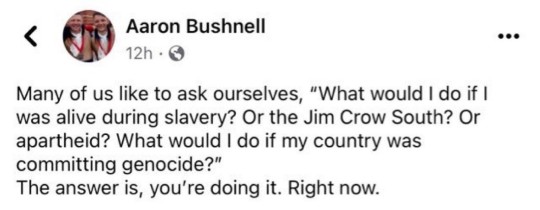
Aaron Bushnell's final social media post before his self-immolation.
42K notes
·
View notes
Text




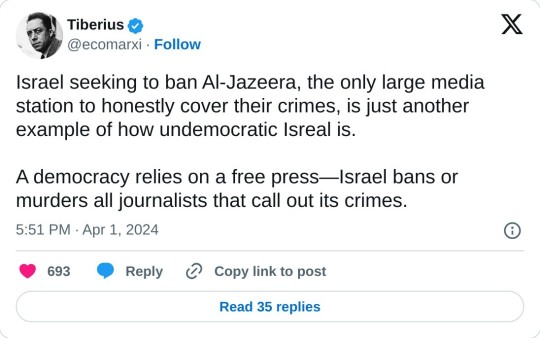
The Israeli occupation government wants to ban the only major news organisation covering the genocide before they invade Rafah where over 1 million Palestinians are trapped.
4K notes
·
View notes
Text
simply have not developed big opinions on a sprinkle of ai in works that require broader creative collaboration like film, but arguing that ‘boycotting a film/game/etc over ai inclusion seems performative’ is topically silly when aimed at actors and artists considering that they’re professional performers
(regardless straightforward boycotts against films/games/art tend to be easy to participate in without prior organization/formation of dual power structures. yeah, these efforts are entirely performative, and arguably, that’s the point)
0 notes
Text
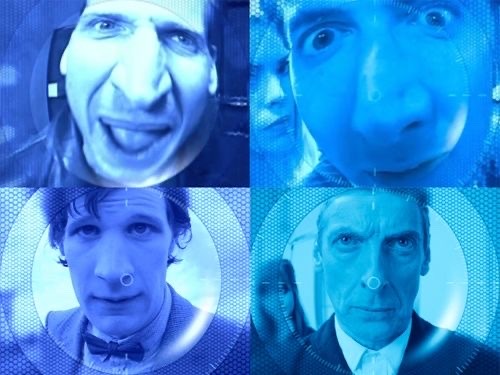
the doctor emotionally monologuing at the daleks and then it cutting to shots like this is one of my favorite parts of dw
47K notes
·
View notes
Photo








Thanks to Gerald Gurian of Star Trek Prop Authority for sharing these terrific candid photographs of Nichelle Nichols on the set of Star Trek. My only complaint is that they’re not in hyperHD.
6K notes
·
View notes
Text

The New York Times, however, does have rules and norms. Schwartz had no prior reporting experience. Her reporting partner Gettleman explained the basics to her, Schwartz said in a podcast interview on January 3, produced by Israel’s Channel 12 and conducted in Hebrew.
Gettleman, she said, was concerned they “get at least two sources for every detail we put into the article, cross-check information. Do we have forensic evidence? Do we have visual evidence? Apart from telling our reader ‘this happened,’ what can we say? Can we tell what happened to whom?”
Schwartz said she was initially reluctant to take the assignment because she did not want to look at visual images of potential assaults and because she lacked the expertise to conduct such an investigation.
This is stunning.
The fear among Times staffers who have been critical of the paper’s Gaza coverage is that Schwartz will become a scapegoat for what is a much deeper failure. She may harbor animosity toward Palestinians, lack the experience with investigative journalism, and feel conflicting pressures between being a supporter of Israel’s war effort and a Times reporter, but Schwartz did not commission herself and her nephew to report one of the most consequential stories of the war. Senior leadership at the New York Times did.
Schwartz said as much in an interview with Israeli Army Radio on December 31. “The New York Times said, ‘Let’s do an investigation into sexual violence’ — it was more a case of them having to convince me,” she said. Her host cut her off: “It was a proposal of The New York Times, the entire thing?”
“Unequivocally. Unequivocally. Obviously. Of course,” she said. “The paper stood behind us 200 percent and gave us the time, the investment, the resources to go in-depth with this investigation as much as needed.”
The whole piece is quite long, please go read it yourself, it's quite definitive.
11K notes
·
View notes
Text
random 2000s lesbians on abandoned 16 year old flickr account you mean absolutely fucking everything to me
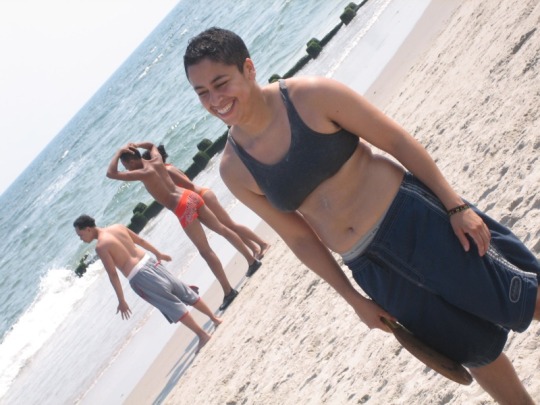
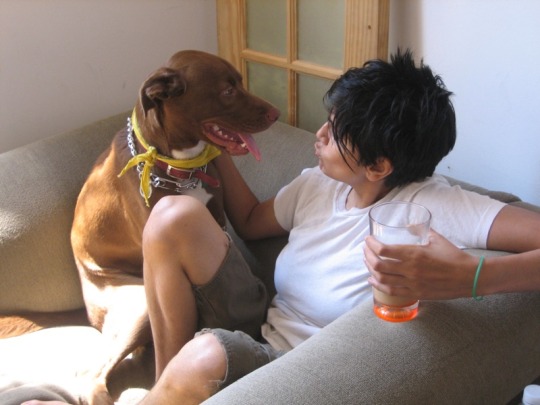

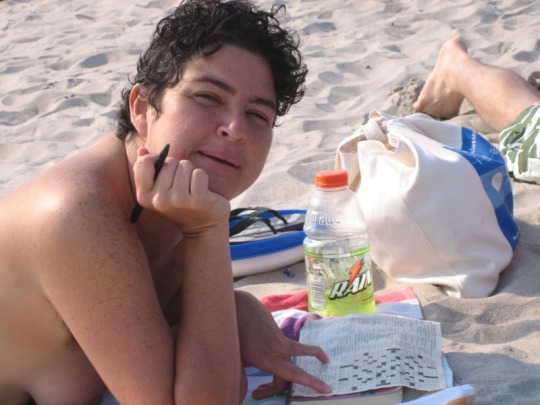


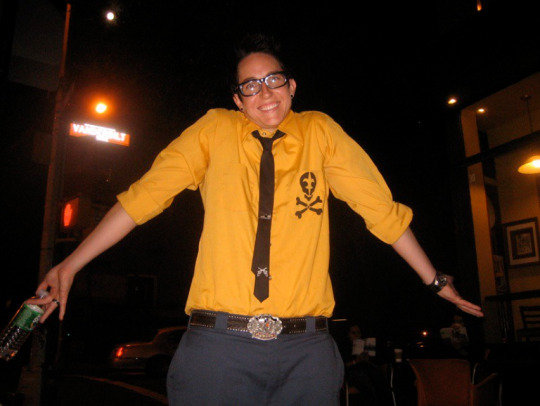
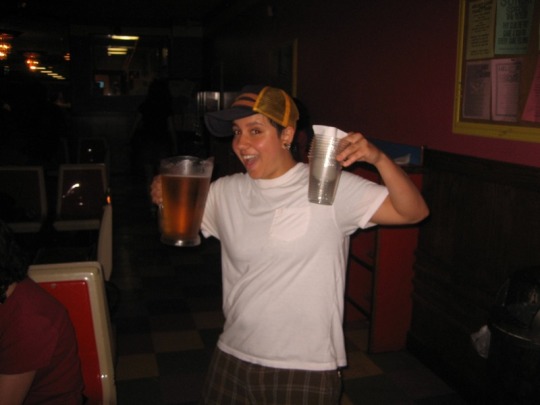



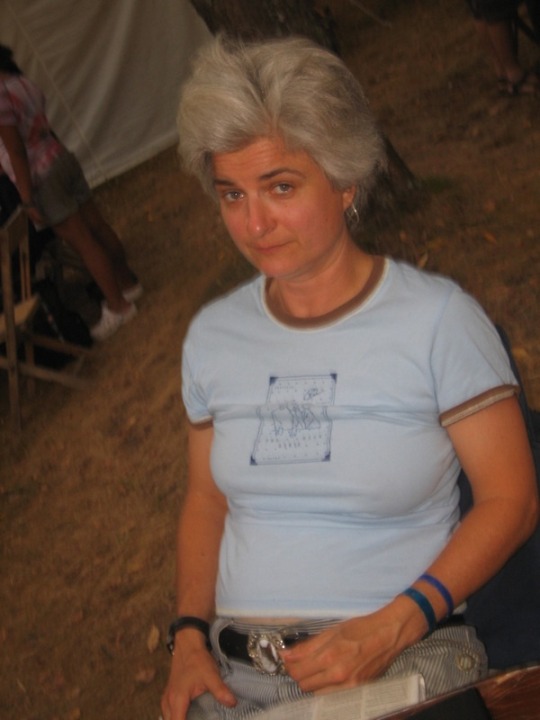

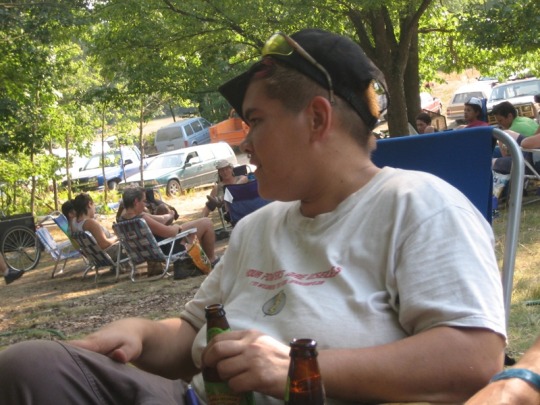


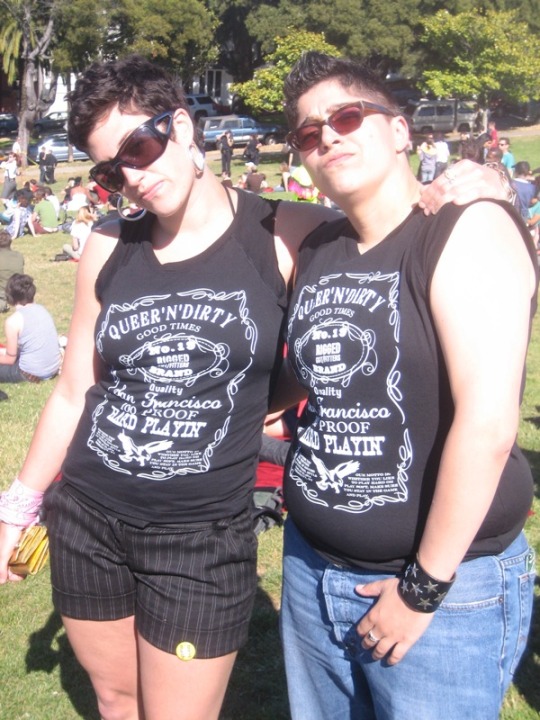





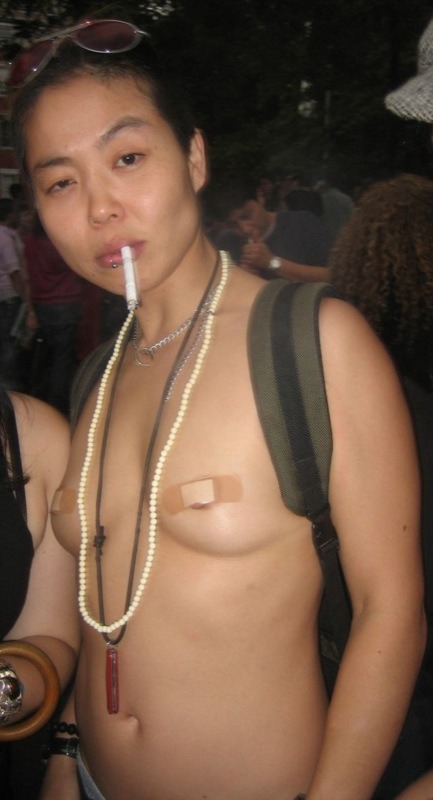

24K notes
·
View notes
